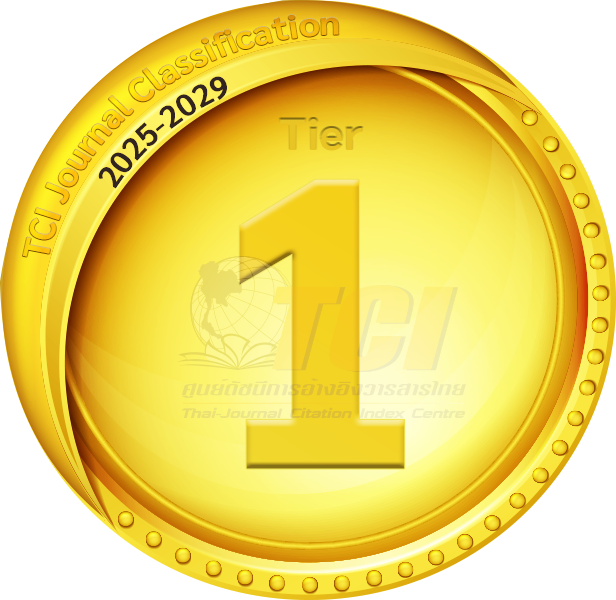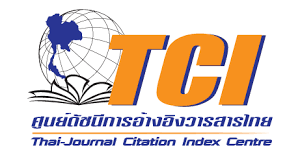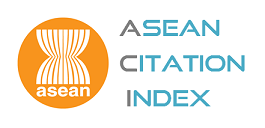Design Guidelines for the Identity of Rapid Transit Stations in Bangkok from Passenger’s Perception of Physical Environment
- Onsoung Seangsuk, Faculty of Architecture, Art and Design, King Mongkut’s Institute of Technology Lardkrabang, Bangkok, Thailand, *Corresponding author’s E-mail : fantar.rk@gmail.com
- Prapatpong Upala, Faculty of Architecture KingMongkut’s Institute of Technology Lardkrabang, Bangkok Thailand
Abstract
The perceived value of the rapid transit lines in Bangkok can be increased when unique features allow them to be distinguished from each other. This paper aims to describe the perception of physical environments at the four lines of rapid transit in Bangkok including the BTS Sky train (BTS), MRT Blue Line (MRT BL), AERA1 (AERAWAN), and MRT Purple Line (MRT PPL). Questionnaires were used to collect data from 800 passengers, using The Likert Scale and One-way ANOVA analysis to analyze the physical environment of the 4 stations. The questionnaire is divided into 3 phases, (1) Indoor physical environment (2) Outdoor physical environment and (3) Interchange stations. The physical environment perception that significantly affects all passengers’ perception was the outdoor area including the external building, other public transport systems, the entrances, exits, and sign systems in the station. The second was the indoor physical environment comprised of the ticket vending machine, walkway, sign system, the position of the information and cooperate image, followed by the interchange station, Skywalk, and shops. This guideline was designed to assess the stations based on three criteria. (1S) Story is the background from culture, society, that, and the area near the station (2S) Space of the station should be associated with the physical environment of each station. (3S) Style focuses on the pattern of designing a sustainable context for the station. The research findings can be used to identify the environmental factors of the stations that will increase the perceived value of the passengers.
Keywords: Physical Environment, Perception, Identity of Station
DOI: 10.14456/jcsh.2023.6
References
Alman, I. (1976). A Conceptual Analysis. Environment and Behavior, 8(1). 7 - 29. https://doi.org/10.1177/001391657600800102.
Ames, A. (1949). Nature and Origins of Perceptions. Windsor, UK: Hanover Institute.
Balmer, J. M. T., & Greyser, S. A. (2006). Corporate marketing: Integrating corporate identity, corporate branding, corporate communications, corporate image and corporate reputation. European Journal of Marketing, 40(7/8),730-741. https://doi.org/10.1108/03090560610669964
Clark, J. (2021). Bangkok Urban Rail Transit Update – 2021 Edition. Retrieved from https://futuresoutheastasia.com/bangkok-urban-rail-transit-2021/
Douglas, G. C. (2010). Rail transit identification and neighbourhood identity. Exploring the potential for ‘community-supportive transit’. Journal of Urban Design, 15(2), 175-193. https://doi.org/10.1080/13574801003638020
Duxbury, N., & Jeannotte, M. S. (2011). Introduction: culture and sustainable communities. Culture and Local Governance, 3(1-2), 1-10. https://doi.org/10.18192/clg-cgl.v3i1.181
Glăveanu, V. P., & Tanggaard, L. (2014). Creativity, identity, and representation: Towards a socio-cultural theory of creative identity. New Ideas in Psychology, 34, 12-21. https://doi.org/10.1016/j.newideapsych.2014.02.002
Gray, E. R., & Balmer, J. M. (1998). Managing corporate image and corporate reputation. Long range planning, 31(5), 695-702. https://doi.org/10.1016/S0024-6301(98)00074-0
Horrayangkurl, V. (2013). Environmental Phychology A Basic for Creation and Management od Livable Environment. Bangkok, Thailand: GBP Centre Co., Ltd.
Mindrut, S., Manolica, A., & Roman, C. T. (2015). Building brands identity. Procedia Economics and Finance, 20, 393-403. https://doi.org/10.1016/S2212-5671(15)00088-X
Novakova, M., & Foltinova, E. (2014). The ordinary–everyday–commonplace as a reference of cultural identity. Procedia-Social and Behavioral Sciences, 122, 114-118. https://doi.org/10.1016/j.sbspro.2014.01.1312
Puttipakorn, P., & Upala, P. (2018). Comparative Analysis of Environmental Graphic Design for Wayfinding on the Exit Patterns of Mass Transit Stations. The Open Transportation Journal, 12(1), 150-166. https://doi.org/10.2174/18744478018120100150
Seangsuk, O. & Upala, P. (2020). Factors Affecting of Physical Environment for Identifying Aesthetics and Spatial Perception at The MRT Blue Line, Transportation for A Better Life: Digital Transformation in Transportation & Logistics Post COVID-19 Era (pp 152-160). In 13th Atrans Annual Conference, Bangkok, Thailand.
Sirijansawang, T., & Upala, P. (2018). Understanding Corporate Identity in the Office of Automotive Business in Bangkok through Building Users and Design Professionals. Asian Journal of Quality of Life, 3(12), 177-193. https://doi.org/10.21834/ajqol.v3i12.154
Tork, H. A., Elgohary, A. F., & Dewidar, K. D. (2019). Train Station’s Identity Throught Image-Based Element. International Journal of Current Research ,11(11), 8370-8374. https://doi.org/10.24941/ijcr.37182.11.2019
Travel happy. (2023). Bangkok BTS And MRT Map 2023. Retrieved from https://travelhappy.info/bangkok-bts-and-mrt-map
Worasit, Y., & Choonhachatrachai, A. (2016). Factor of Service Quality and Passenger Behavior Effecting to Attitudes of Consumers in Bangkok Metropolitan. MUT Journal of Busines Administration, 13(1), 24-42.
Ye-Kyeong, S., & Hye-Jin, J. (2015). New spatial possibilities of railway station: everyday heritage, enjoyable landscape. Procedia engineering, 118, 377-383. https://doi.org/10.1016/j.proeng.2015.08.437

Indexed in


Search